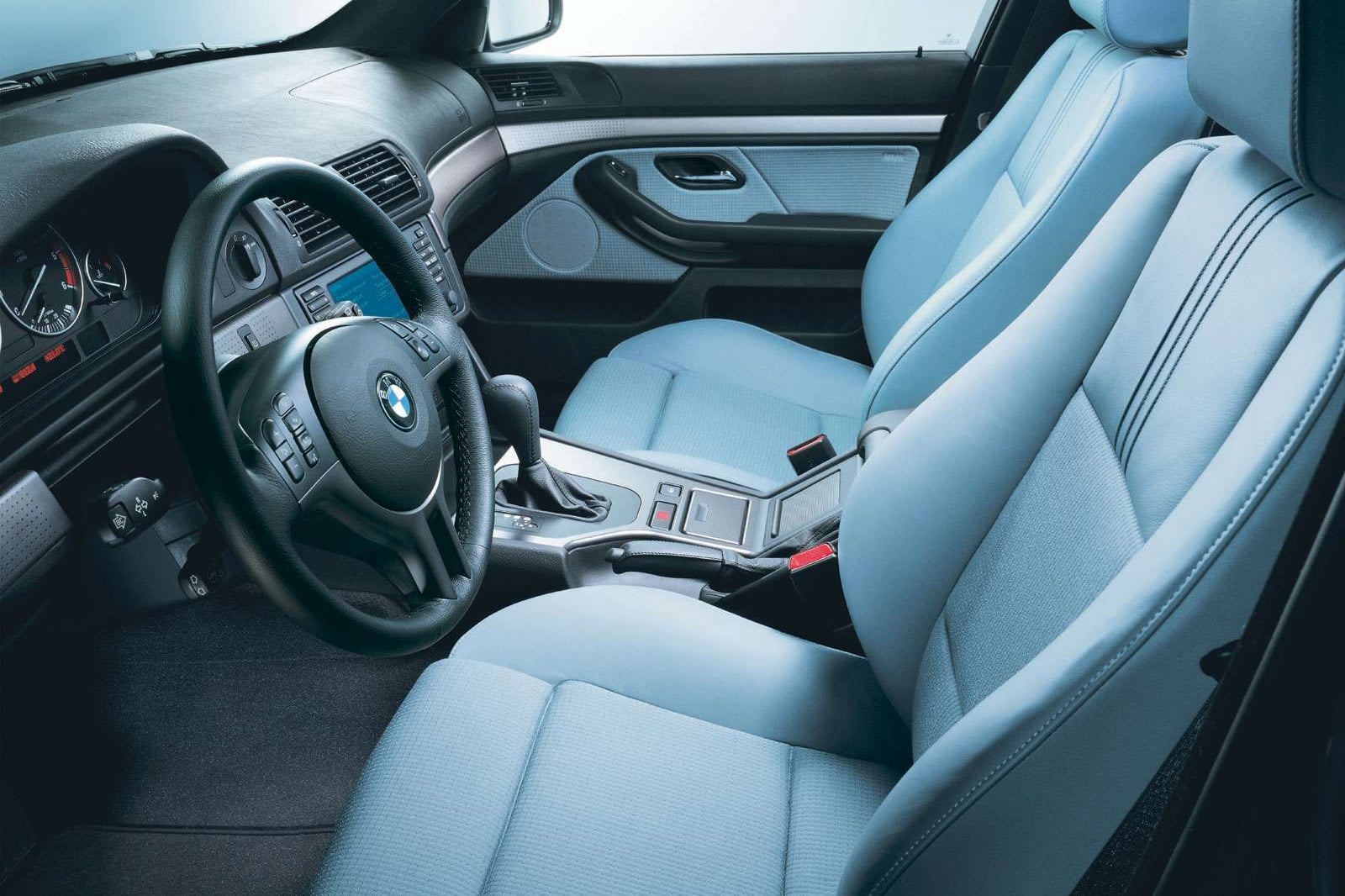Some BMW 5 series E39 battery problems have been reported, but most of them relate to either a door-switch malfunction, which keeps the car "awake" when turned off and locked, or low-current audio-system cables short-circuiting. This may also tie in with the typical 1997-2003 BMW 5 Series door-lock problems, which are often related to the electric door-lock circuitry developing poor contacts in the wiring harness, sometimes linked to water ingress into the door's wiring harnesses.
Other 1997-2003 BMW 5 Series electrical problems can be linked to alternator problems, which could appear as the alternator's brushes wear out with age. Unfortunately, owners report that service parts for these alternators are difficult to impossible to find, which usually means that the whole alternator must be replaced. 1997-2003 BMW 5 Series fuel-pump problems are not common, and neither are fuel-injector problems.
While replacing the brake fluid isn't a massive operation, some owners report problems bleeding the BMW 5 Series E39's brakes. This is usually due to an air lock in the brake master cylinder, and it appears that the easiest way to solve this issue is by using a one-man bleeding kit that sucks the new fluid into the system from the caliper side. 1997-2003 BMW 5 Series ABS problems are fortunately very seldom reported, and are usually caused either by old brake fluid (which corrodes the ABS pump and brake lines, or an electronic sensor malfunction.
1997-2003 BMW 5 Series drivetrain problems are quite uncommon, and most owner complaints point towards either the driveshaft's rubber flex coupling perishing, or dried and worn driveshaft joints causing vibrations and untoward noises. If the vehicle is equipped with self-leveling suspension, such as all Sport Wagons, leaks, position-sensor errors, or compressor failures could cause 1997-2003 BMW 5 Series air-suspension problems, and this usually needs specialist attention to remedy. There was, however, no BMW 5 Series E39 recall for air-suspension problems.
1997-2003 BMW 5 Series automatic gearbox problems are not unheard of, with the five-speed automatic transmission turning particularly fragile if abused or improperly maintained. The only way to help avoid this is through frequent gearbox oil changes with fully synthetic OEM-approved transmission fluid. In contrast, 1997-2003 BMW 5 Series clutch problems are not an issue at all, and most owners reach more than 80,000 miles on the original clutch assembly.
BMW 5 Series E39 dashboard-light or -symbol problems are few and far between - if the instrument cluster shows a warning light in the dash cluster, it most often indicates an actual problem. The most frequently asked questions are regarding the various brake-system warning lights, so please consult the owner's manual for a full explanation of the different warning lights' meanings.
1997-2003 BMW 5 Series headlight problems are few and far between and are mostly linked to replacing xenon globes, which is quite a tricky operation in terms of accessibility.






 Acura
Acura
 Alfa Romeo
Alfa Romeo
 Aston Martin
Aston Martin
 Audi
Audi
 Automobili Pininfarina
Automobili Pininfarina
 Bentley
Bentley
 BMW
BMW
 Bollinger
Bollinger
 BrightDrop
BrightDrop
 Bugatti
Bugatti
 Buick
Buick
 Cadillac
Cadillac
 Caterham
Caterham
 Chevrolet
Chevrolet
 Chrysler
Chrysler
 Dodge
Dodge
 Ferrari
Ferrari
 Fiat
Fiat
 Fisker
Fisker
 Ford
Ford
 Genesis
Genesis
 GMC
GMC
 Gordon Murray Automotive
Gordon Murray Automotive
 Hennessey
Hennessey
 Honda
Honda
 Hyundai
Hyundai
 Ineos Automotive
Ineos Automotive
 Infiniti
Infiniti
 Jaguar
Jaguar
 Jeep
Jeep
 Karma
Karma
 Kia
Kia
 Koenigsegg
Koenigsegg
 Lamborghini
Lamborghini
 Land Rover
Land Rover
 Lexus
Lexus
 Lincoln
Lincoln
 Lordstown
Lordstown
 Lotus
Lotus
 Lucid Motors
Lucid Motors
 Maserati
Maserati
 Mazda
Mazda
 McLaren
McLaren
 Mercedes-Benz
Mercedes-Benz
 Mini
Mini
 Mitsubishi
Mitsubishi
 Nissan
Nissan
 Pagani
Pagani
 Polestar
Polestar
 Porsche
Porsche
 Ram
Ram
 Rimac
Rimac
 Rivian
Rivian
 Rolls-Royce
Rolls-Royce
 Spyker
Spyker
 Subaru
Subaru
 Tesla
Tesla
 Toyota
Toyota
 VinFast
VinFast
 Volkswagen
Volkswagen
 Volvo
Volvo